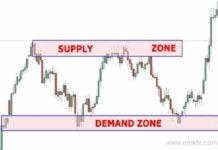
The story of Long Term Capital Management (LTCM) remains a cautionary tale in the world of finance, particularly when it comes to risk management strategies. Once hailed for its innovative approach and staffed with Nobel laureates, LTCM’s spectacular collapse in 1998 sent shockwaves through the financial industry. This article aims to dissect the lessons learned from LTCM’s rise and fall, separating the myths from the realities of its risk management approach.
The LTCM Legacy:
LTCM was founded in 1994 by a group of highly esteemed individuals, including Nobel laureates Myron Scholes and Robert Merton, who had developed the Black-Scholes-Merton model for options pricing. The hedge fund’s primary trading strategy involved complex mathematical models and arbitrage opportunities in fixed income markets.
Myth: The Infallibility of Mathematical Models
LTCM heavily relied on sophisticated mathematical models to predict market movements and identify arbitrage opportunities. The myth was that these models were infallible, providing an illusion of risk-free profits. However, the reality was that the models had limitations and couldn’t account for extreme market events or systemic risks.
Lesson: Humility in Modeling
The LTCM saga underscores the importance of humility in relying on mathematical models. While quantitative models can be powerful tools, they should be viewed as guides rather than absolute predictors. Traders and fund managers must acknowledge the inherent uncertainty in financial markets and consider the possibility of unforeseen events.
Myth: Overlooking Liquidity Risk
LTCM’s strategy involved leveraging its positions, assuming that it could easily unwind trades in any market condition. The myth was that liquidity risk was negligible. However, during the Russian financial crisis in 1998, liquidity evaporated, and LTCM found itself unable to exit positions, leading to massive losses.
Lesson: Prioritizing Liquidity Management
The LTCM experience emphasizes the need to prioritize liquidity risk management. Investors and fund managers should carefully assess the liquidity of their portfolios and consider potential challenges in unwinding positions, especially during periods of market stress.
Myth: Blind Trust in Financial Models
LTCM’s management and investors placed blind trust in the mathematical models, assuming that the brilliance of the minds behind them would safeguard the fund from significant losses. The reality was that unforeseen market conditions and the interconnectedness of global financial markets could disrupt even the most advanced models.
Lesson: Diversification and Scenario Analysis
One crucial lesson from LTCM is the importance of diversification and scenario analysis. Investors should diversify across asset classes and geographies; considering how different scenarios might impact their portfolios. This approach can help mitigate risks associated with unforeseen events and market disruptions.
Conclusion:
The LTCM story serves as a stark reminder that no strategy, regardless of its complexity or the brilliance of its creators. It is immune to market risks. The key takeaway is to approach risk management with a balanced perspective, incorporating humility, a focus on liquidity, and a realistic understanding of the limitations of mathematical models. As the financial landscape continues to evolve, these lessons from LTCM remain relevant for investors and fund managers navigating the complexities of today’s markets.
Click to sign up with Think Markets
Related Articles:
Artificial Intelligence and Machine Learning Drive Algo Trading to New Heights
Central Bank Reserves Shift : Gold Surpasses Other Assets in Portfolio Allocation






















